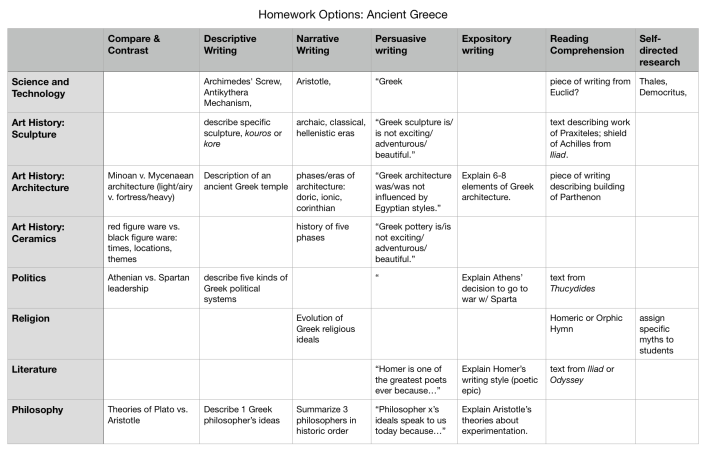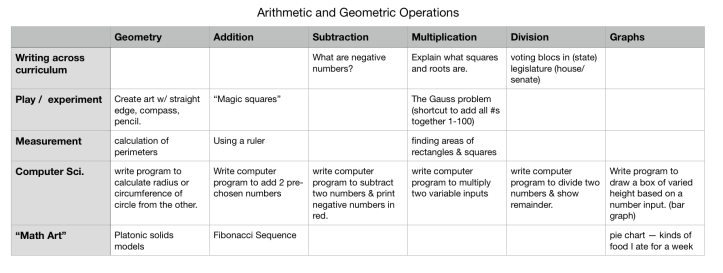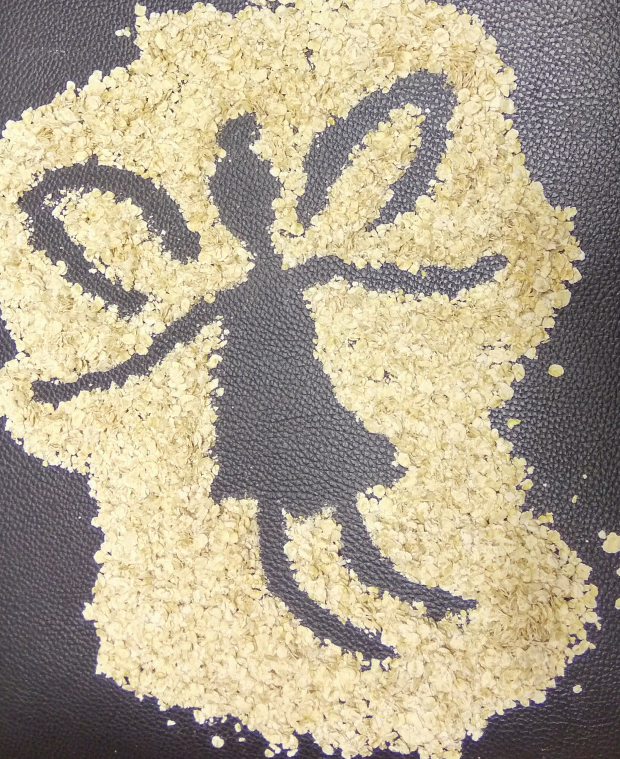Around this time of year, I always think about how I’m going to re-design my teaching for the fall semester. It doesn’t matter whether I’m teaching or not, I think about it.
A recent conversation with Dave Gray of XPLANE, Inc. got me thinking about his heuristic matrix from the book Gamestorming which he wrote with Sunni Brown. A heuristic matrix looks a lot like the grid from a spreadsheet, and which I used several years ago to redesign homework.
That grid looked something like this…

I identified a bunch of broad categories that I wanted my students to learn about. In this example, based on the broad theme of teaching about Ancient Greece, I have categories like religion, and aspects of art history, politics, literature, philosophy, and science and technology.
I then identified a variety of styles that I wanted my students to learn to write in. These formed the individual columns of the heuristic matrix. These included paragraphs dealing with compare and contrast writing, where the same paragraph alternates between two different viewpoints or styles. There was also descriptive writing, involving a top-to-bottom explanation of a thing or a place. Narrative writing, the description of a beginning-to-end process, was another category. Persuasive paragraphs offer reasons for holding an opinion, and attempt to persuade the reader to accept a particular viewpoint. Exposition attempts to define or explain a person’s ideas or opinions without forcing them on the reader. Reading comprehension, on the other hand, asks students to engage with an actual historical text. Self-directed research is another category — independent projects of various kinds.
I haven’t filled in the heuristic matrix completely. Some of this is left as an exercise to the reader (which is to say, perhaps, that I’m lazy or that I don’t wish to think all of this through, or maybe that I don’t wish to share all of my thought process at once). But the overall structure should be discernible.
I tried to do something similar with a mathematics heuristic grid for a lower grade, perhaps grade 2, grade 3, or grade 4.

I’m not a mathematics teacher, so you’ll notice that the grid isn’t completely filled in. But you’ll see what I’m trying to do… I’m trying to come up with a variety of mathematics exercises and activities that don’t revolve exclusively around the traditional “do these 20 problems to learn a type of procedure” worksheets or homework lists. This is about inventing new forms of assignments and identifying how these can be used to teach or refresh skills that lie outside the usual curriculum norms.
And it’s important to note that YOU don’t have to fill in a grid completely, either. You may only generate one or two useful ideas from a heuristic matrix. Yet if a few of those ideas have the chance to reinvigorate your teaching, that may be worth i.
SaveSave
Rate this:Share this:- More





